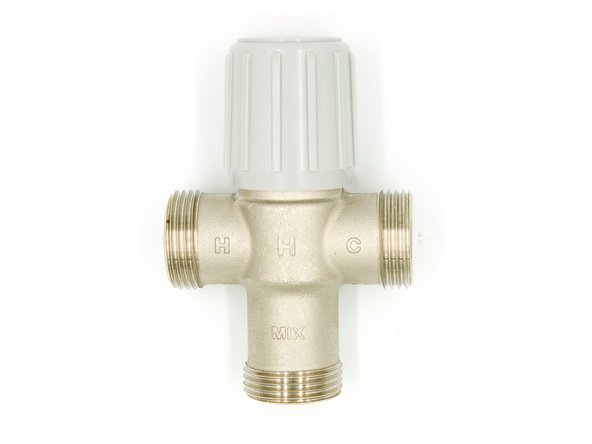Introduction
If the hot water is simply not warm enough, there are several possible causes:
Bad lower heating element (or lower thermostat)
Faulty Thermostatic Mixing Valve in a faucet or shower control
One (or both) of the water heater's thermostats set too low
Water heater’s capacity too small
Plumbing leak somewhere in the home's hot water pipes
The information on this web site is supplemental to the printed instructions that came with your water heater. To reduce the risk of property damage, serious injury or death, read and follow all labels on the water heater and the safety instructions in the printed owner's manual.
Tools
Parts
-
-
Meat thermometer
-
Thermostatic mixing valves
-
-
-
If the lower heating element (or, more rarely, the lower thermostat) is not working, you will have some hot water but not as much as before. Because the lower element does most of the work, the lower element usually wears out before the upper element.
-
See Checking/Replacing Heating Elements for help checking the lower heating element.
-
It is difficult to test the lower thermostat. If the lower heating element is good, and you've eliminated all of the other possible causes listed here, you should consider replacing the lower thermostat.
-
-
-
If the hot water is simply not warm enough, make sure the faucet you are checking doesn’t have a defective Thermostatic Mixing Valve. Many shower controls now have built-in mixing valves. If these devices fail, they can reduce the amount of hot water the shower or faucet delivers even though there is plenty of hot water in the tank.
-
-
-
Always check the water temperature at several faucets to make sure the problem is not in a faucet or shower control.
-
-
-
If the water temperature at several faucets is too cool, the water heater's thermostats may need adjusting. See Adjusting Temperature for assistance.
-
WARNING! Because of the increased risk from scalding, if you set the water heater’s thermostat(s) higher than 120°F, Thermostatic Mixing Valves at each point of use are recommended to reduce the risk of scalding.
-
-
-
If your water heater runs out of hot water too quickly, it may be too small for your needs. If the water heater is old, consider replacing it with a larger model.
-
If the water heater is fairly new, you may be able to meet your needs by installing a Thermostatic Mixing Valve and turning the thermostat(s) to a higher setting. A higher temperature setting can make your water heater seem up to 30% larger.
-
WARNING! Because of the increased risk from scalding, if you set the water heater’s thermostat(s) higher than 120°F, Thermostatic Mixing Valves at each point of use are recommended to reduce the risk of scalding.
-
You can reduce your home’s hot water needs by washing clothes in cold water, installing flow restrictors on shower heads, repairing leaky faucets, and taking other conservation steps.
-
-
-
Check the water heater's connections and make sure your home’s hot water pipe is connected to the hot water outlet on the water heater.
-
Usually, reversed connections are found soon after the installation of a new unit.
-
-
-
Even a small leak in the hot water side of the home’s plumbing system can make it appear that the water heater is producing little to no hot water. Locate and repair any leaks found.
-












